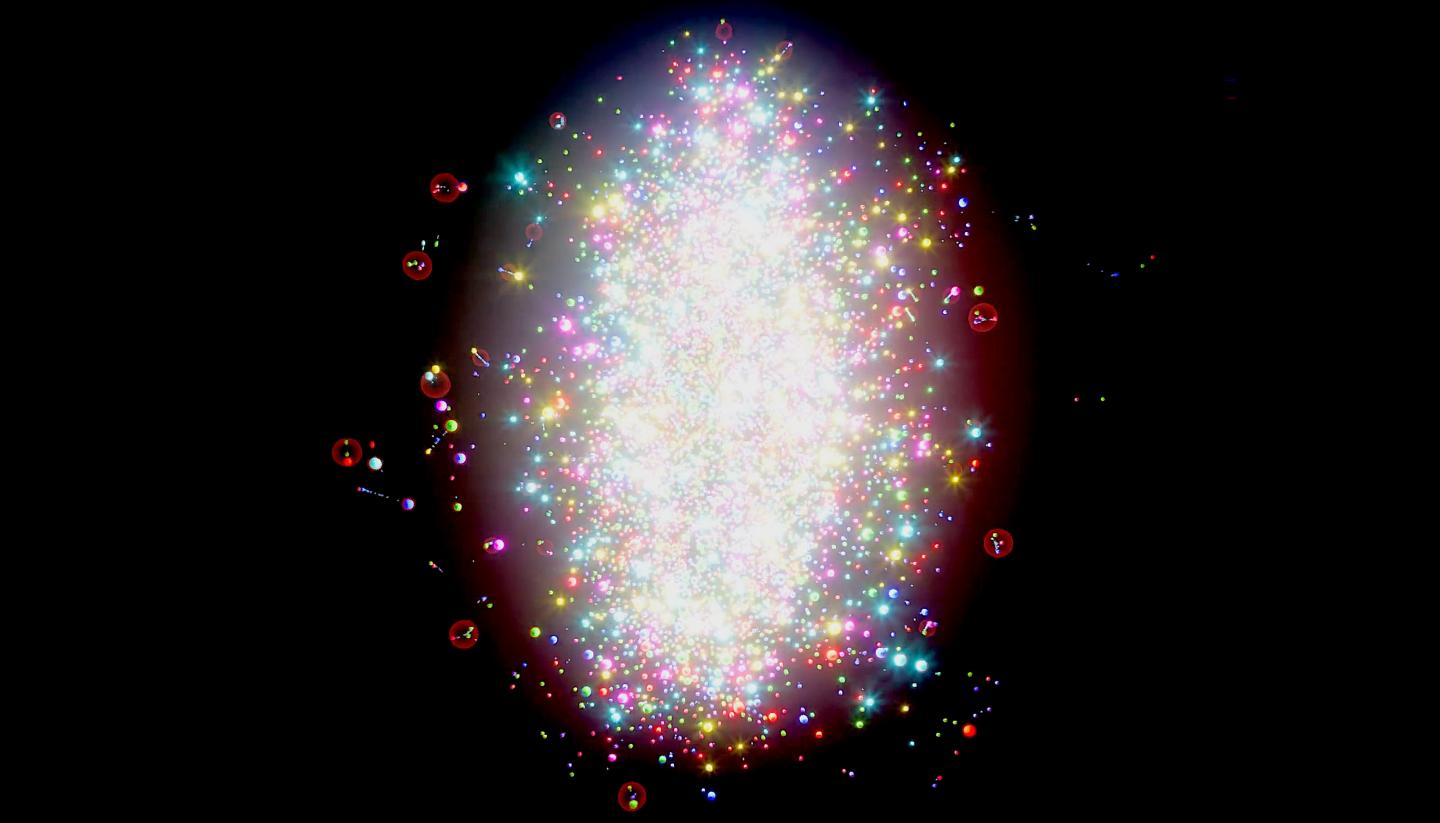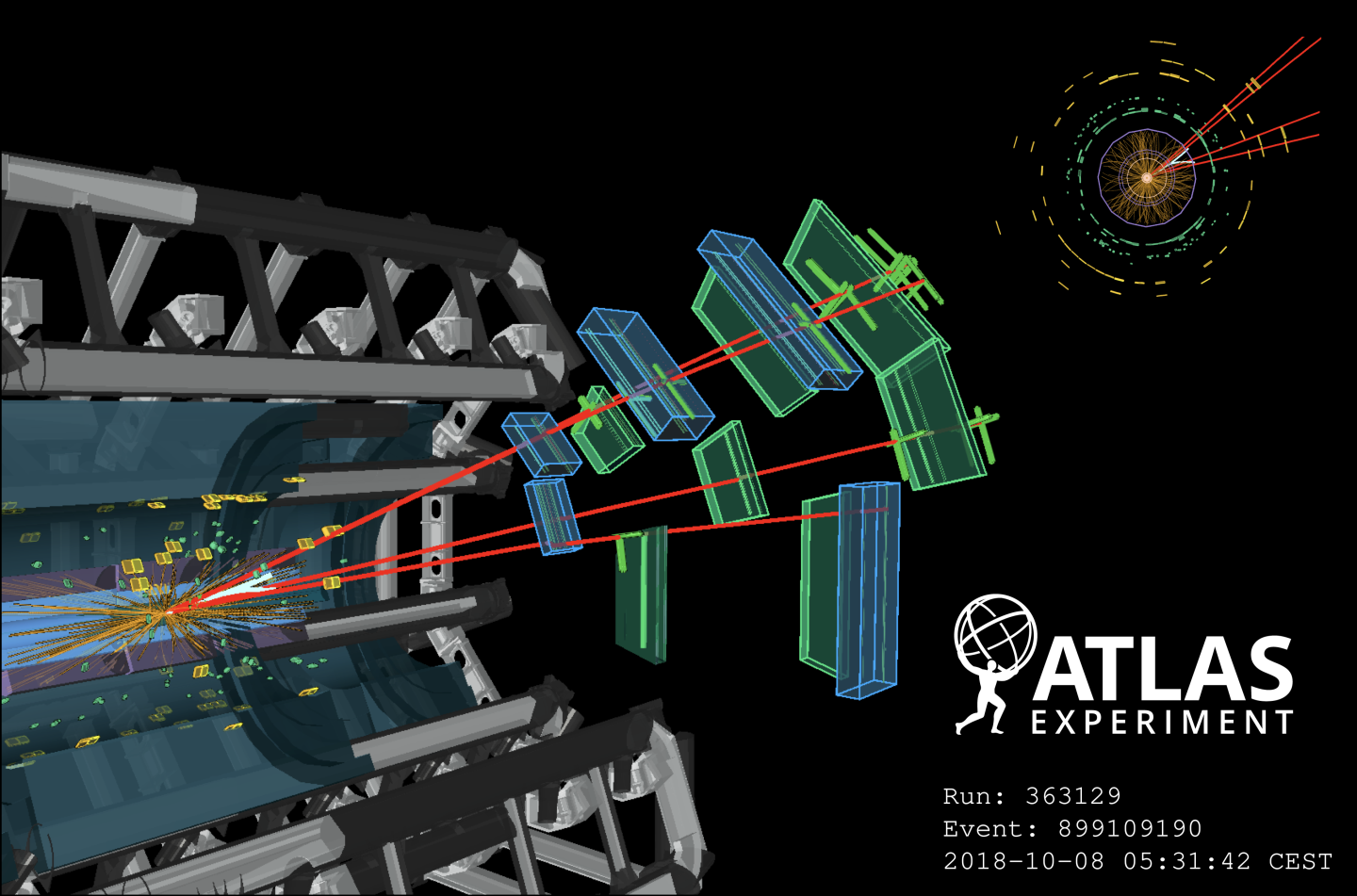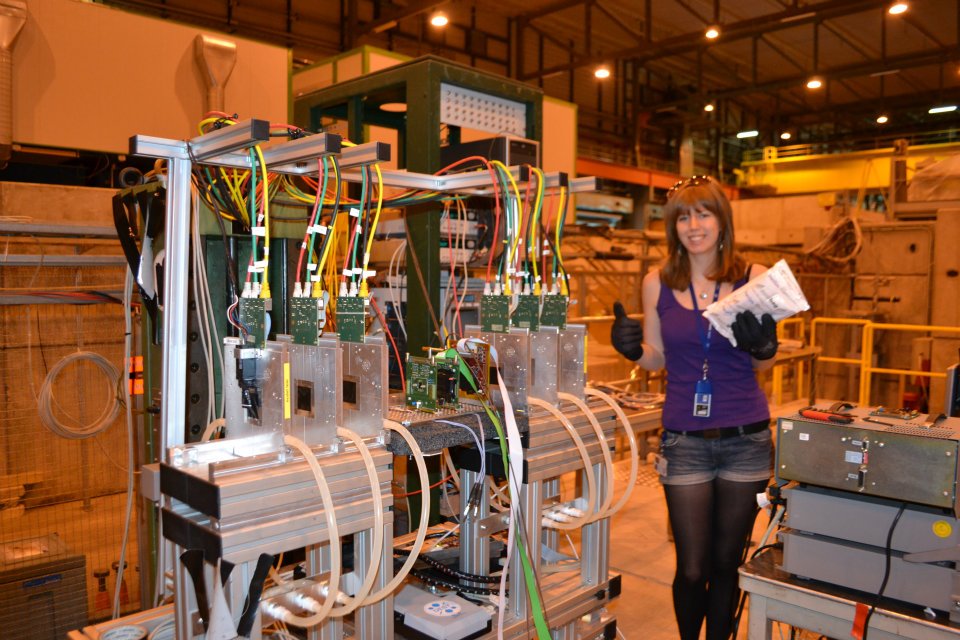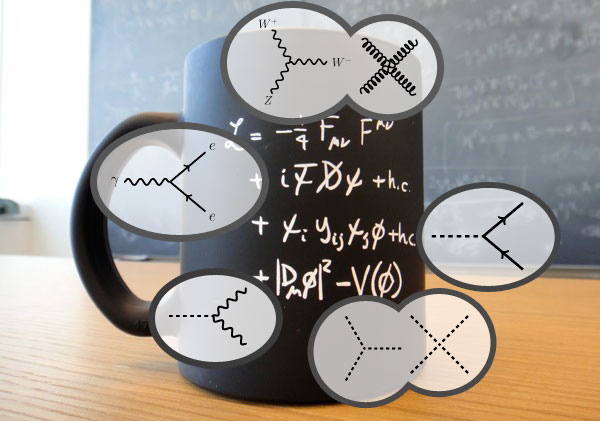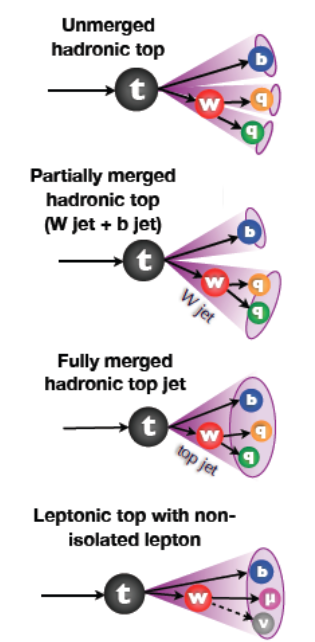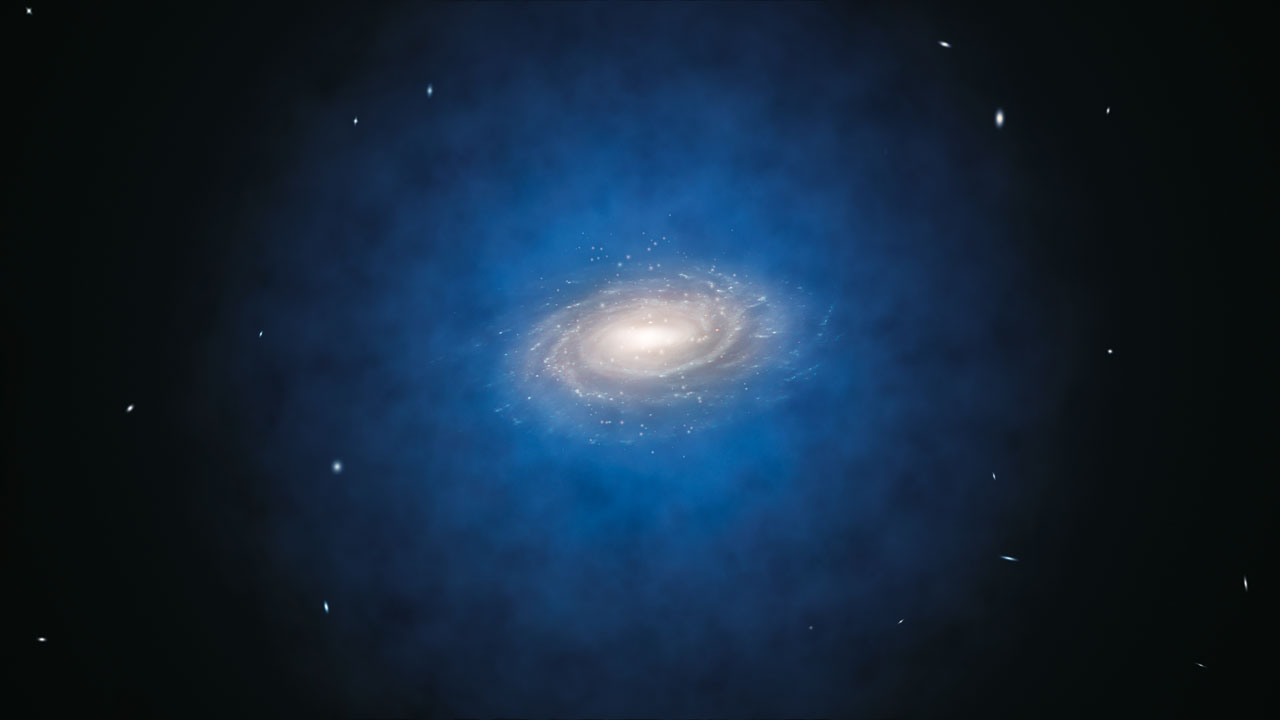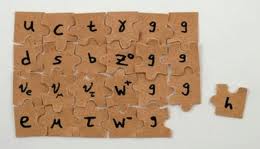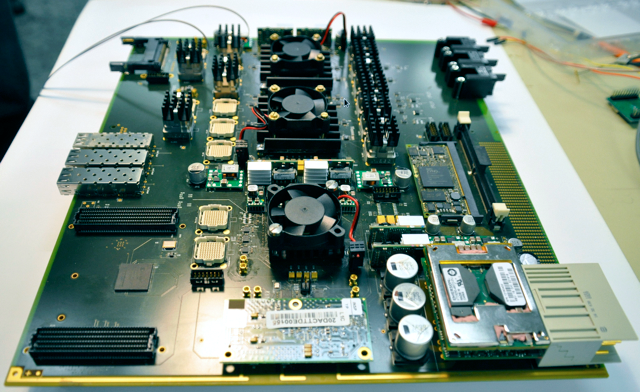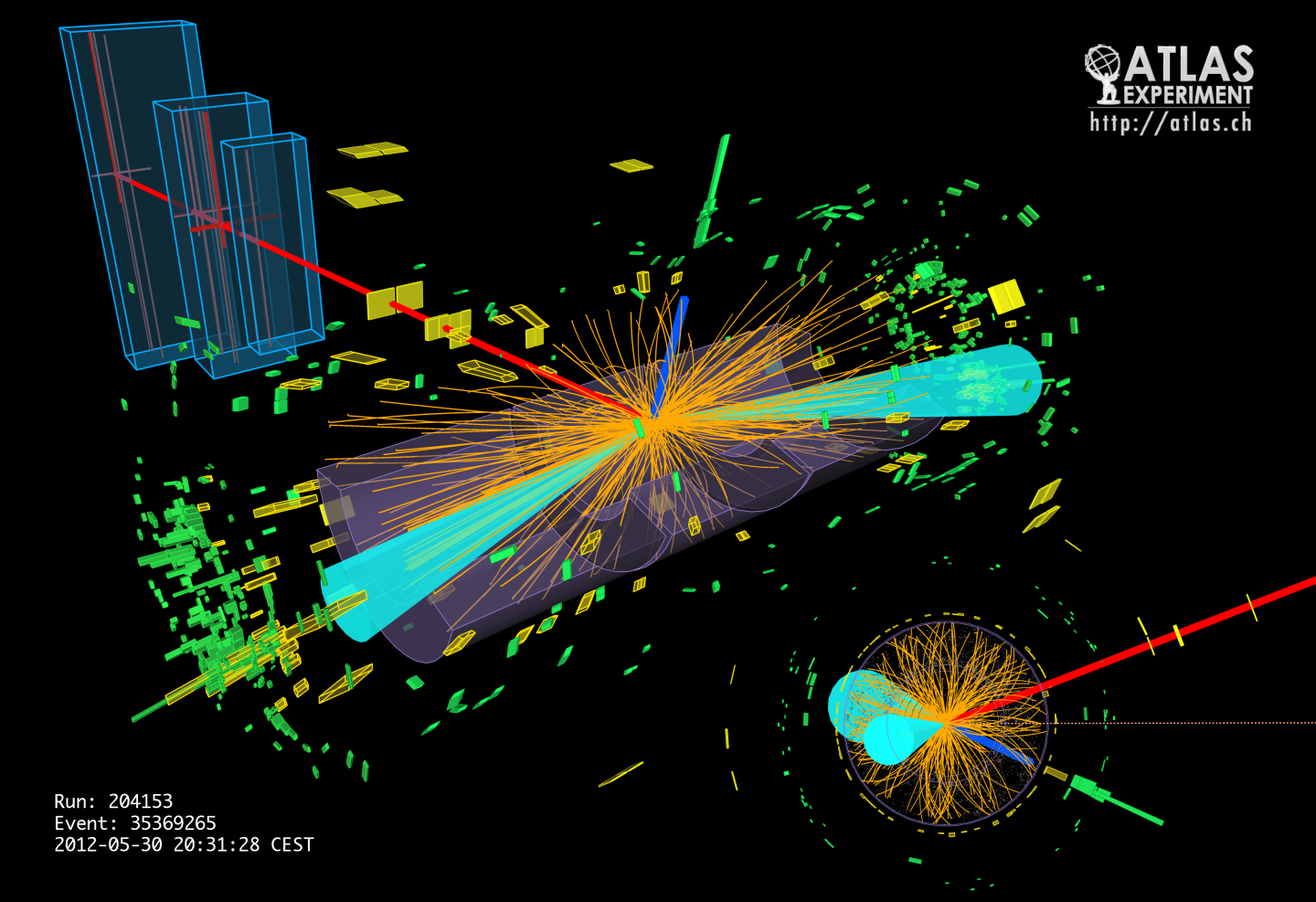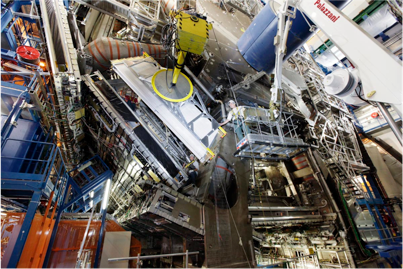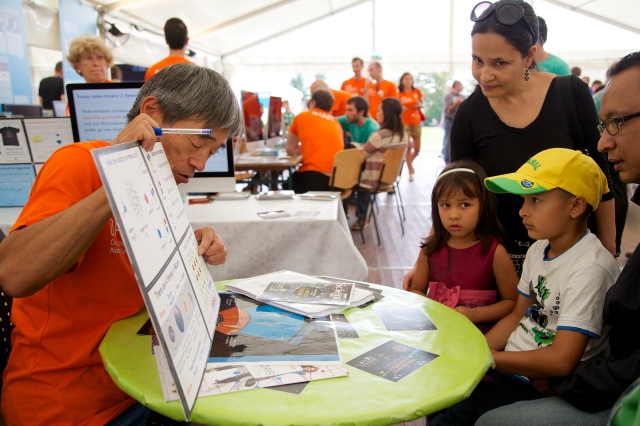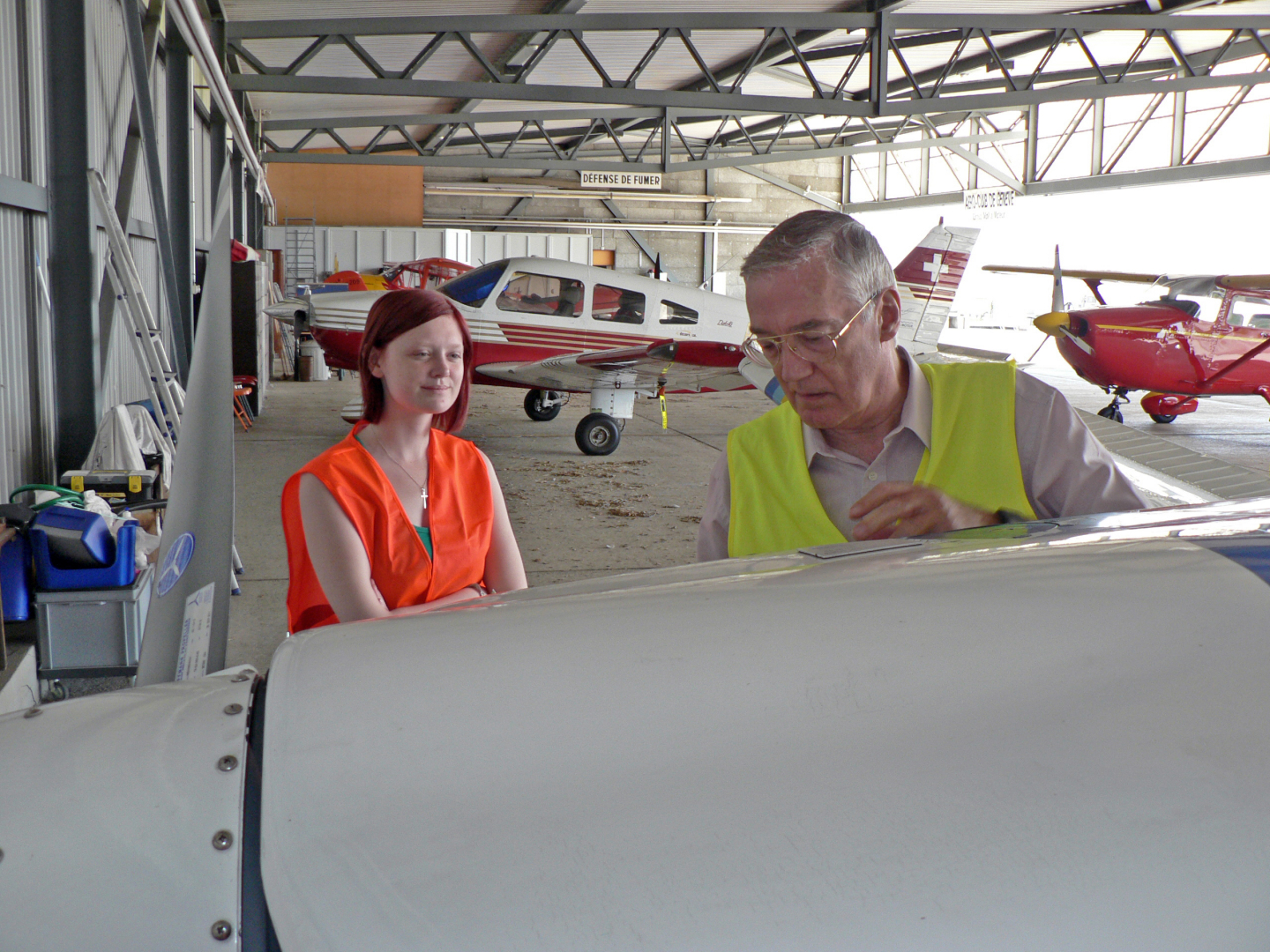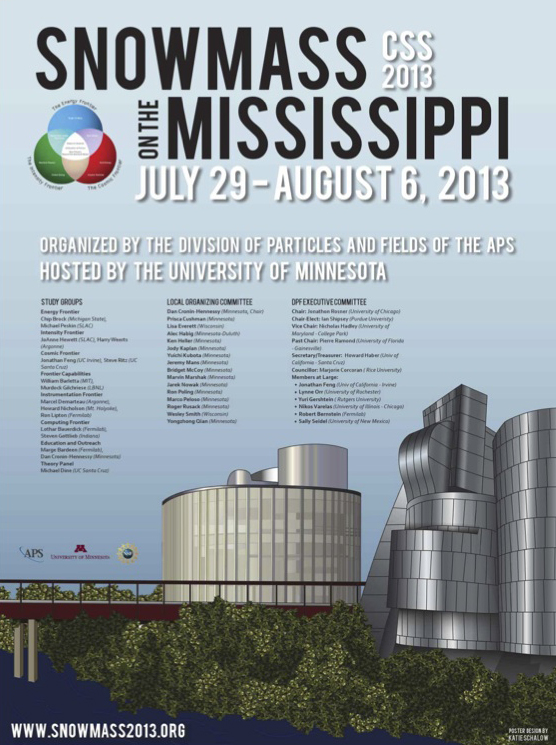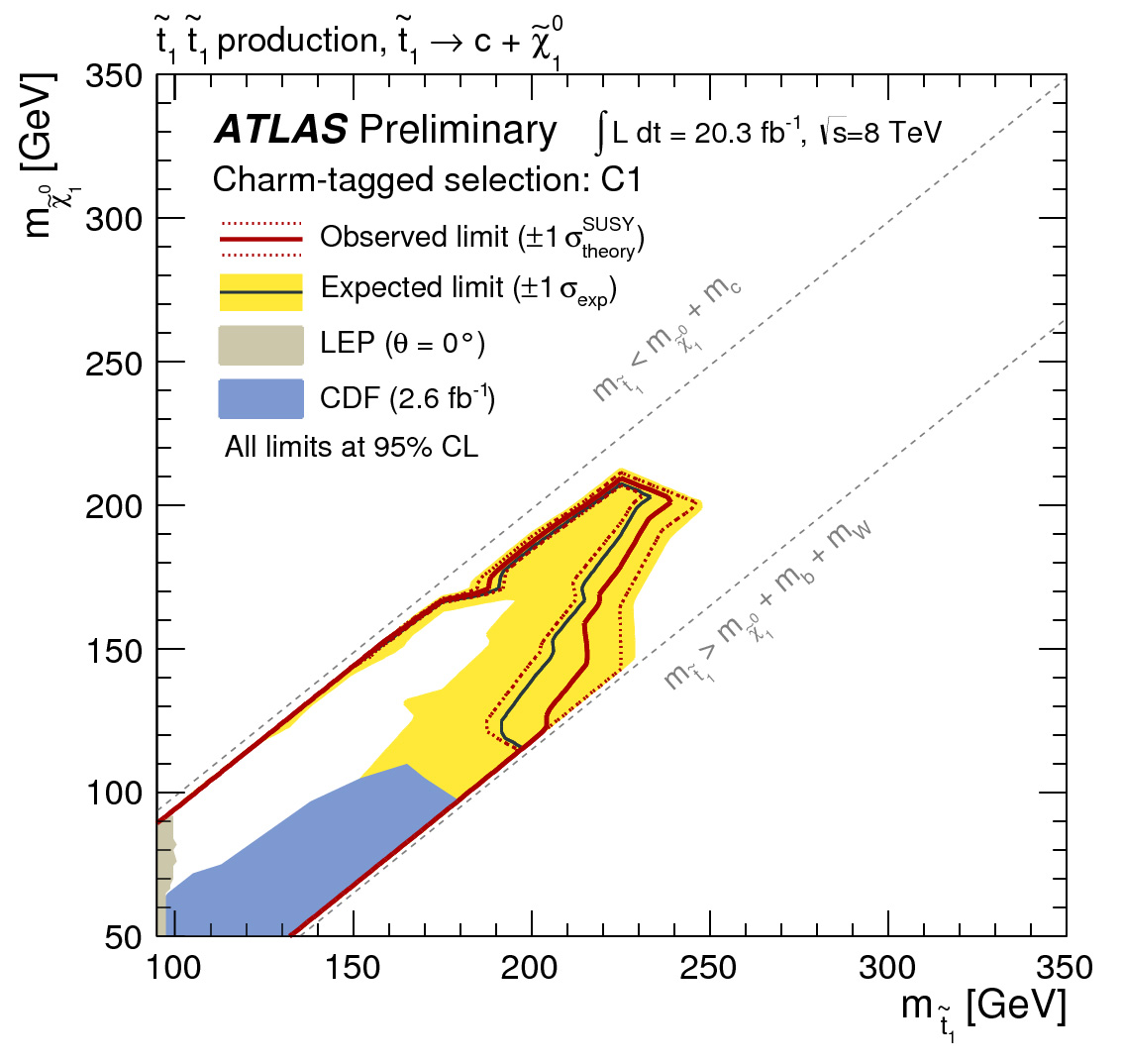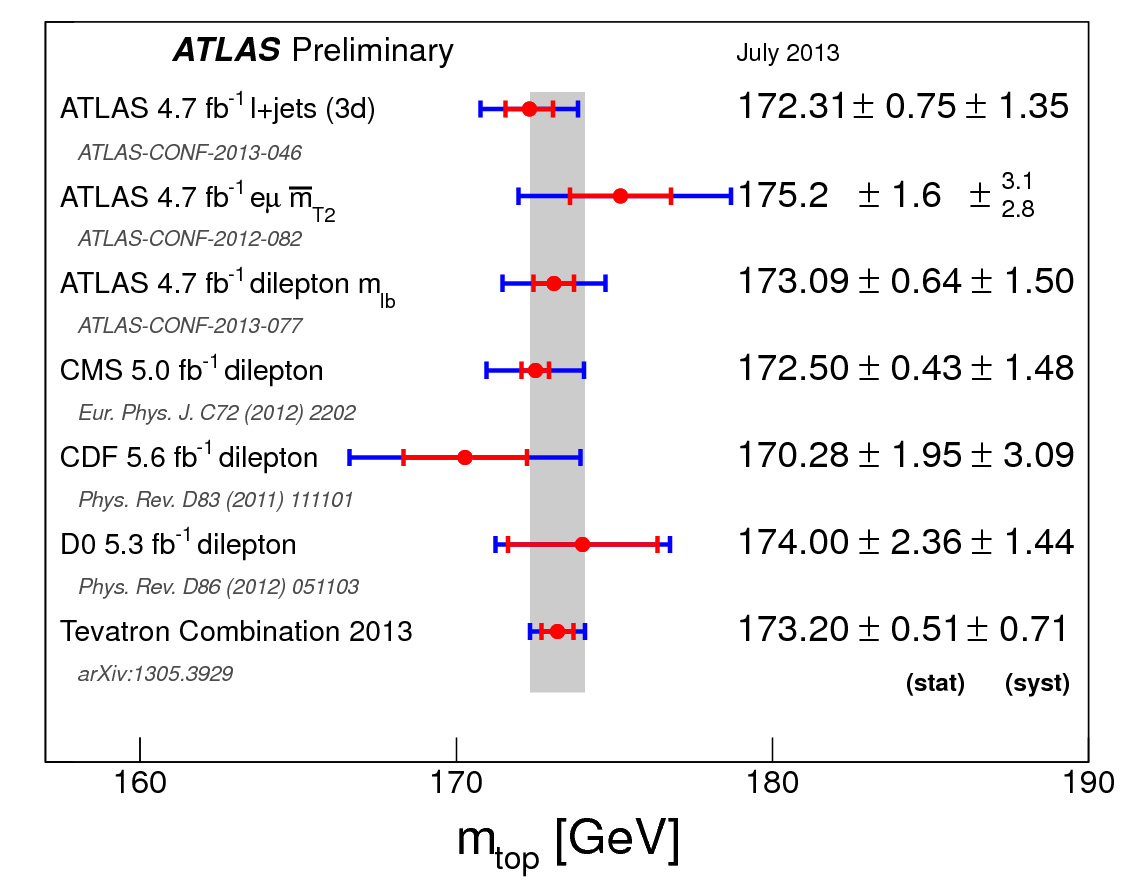Notes from underground: Pixel prototypes
In last week’s post for this Notes from Underground series, David talked about the work that goes on in the ATLAS pit. I'm going to take a step back and talk about what happens before a detector is installed. Although the work I want to tell you about didn't technically take place underground, much of it was performed in what is essentially a large airport hangar without natural light, so it certainly feels like you’re 100m down!
Blog |
Notes from Underground: Servicing Silicon
We physicists refer to the vast underground cavern that houses the ATLAS experiment as ‘the pit’. That may be a strange term to use for a marvel of civil, mechanical and electrical engineering, but nonetheless there are parallels to what you might imagine a ‘pit’ to be. Working inside the ATLAS detector in the pit can be dark, sometimes hot and not suited to those with claustrophobia. It often involves climbing several sets of makeshift steps and gantries and crawling flat on your stomach through narrow gaps to get to the part of the detector where you need to be. You will be wearing a safety helmet with mounted lamp, steel toe-cap shoes, one or more dosimeters to monitor radiation exposure and even a harness, if working at heights. Not to mention tools, laptop and any equipment you need to do your job. You tend to recognize the experimental physicists, engineers and technicians who have just come up from the pit – they stand blinking in the sunlight with a tired and rather sweaty appearance.
Blog |
"A hard day, with so much beauty"
ATLAS physicists travelled with Physics Without Frontiers 2014, a project run by International Centre for Theoretical Physics (ICTP), to three Palestinian universities this April to share the joy of scientific research with 140 students.
News |
ATLAS Connects with Science Fest Visitors
On 5 and 6 April, Michigan State University's ATLAS physicists who are based at CERN connected virtually via video-conference to visitors attending the annual Science Festival in East Lansing, USA, to talk about particle physics and what it is like to be a physicist.
News |
Unread section opened in the Standard Model book
While others are worrying that new physics might be running out of corners (see Eve Le Ménédeu's blog) we should not forget that even within the book of the Standard Model there are completely unread chapters. The Standard Model draws its success from the fascinating fact that its basic energy density formula, called Lagrangian, is uniquely defined by just specifying three fundamental symmetries.
Blog |
Is new physics running out of corners?
Friday was the last occasion for Moriond participants to see new results on specific physics topics since Saturday is reserved for summary talks. The topic was 'Beyond the Standard Model' -- a very large subject, which covers an incredible number of theoretical models, from Supersymmetry to Two-Higgs-Doublet Models, two of the most discussed topics of the day.
Blog |
Dark Matters
The winter conference season is well under way, and what better way to fill my first blog post than with a report from one of the premier conferences in particle and astroparticle physics: the Rencontres de Moriond.
Blog |
The Neutrino Puzzle
Having explored the latest results on what we call 'heavy flavour' or physics of particles containing a b-quark (see The Penguin Domination by Jessica Levêque), we embarked on a much lighter subject: neutrinos.
Blog |
No matter how hard you try... Standard is standard
The past two days of the Recontres de Moriond 2014 Electroweak conference have been very intense with many new experimental results, many insightful theoretical talks and many lively discussions. Since the topics cover neutrino experiments, astrophysical observations and Standard Model precision measurements, giving a summary is not an easy task. But I will try.
Blog |
The Penguin Domination
This week features the 2014 Moriond Electroweak conference at La Thuile, Italy. More than a 100 particle physicists gather from all around the world. Started 50 years ago, this conference is still very valued, year after year, due to the high quality of the talks. The Moriond winter conference is one of the most exciting conferences, as all the particle physics experiments present their brand new results, but it is also appealing because of the mountains and the great Italian food.
Blog |
Five Outstanding Students Win ATLAS Thesis Awards
The ATLAS Thesis Awards recognize some of our postdoctoral colleagues who have made exceptional contributions to the experiment, across all areas, in the context of a PhD thesis.
News |
ATLAS PhD Grant Scholars Announced
The first recipients of the ATLAS PhD Grant were presented with a certificate on 11 February at CERN by the programme’s selection committee. The three scholars, Lailin Xu of China, Josefina Alconada of Argentina, and Gagik Vardanyan of Armenia, were delighted at being able to continue their PhD programmes at CERN.
News |
Dealing With Data
In the first run of the Large Hadron Collider, almost a billion proton-proton collisions took place every second in the centre of the ATLAS detector. That amounts to enough data to fill 100,000 CDs each second. If you stacked the CDs on top of each other, in a year it would reach the moon four times. Only a small fraction of the observed proton–proton collisions have interesting characteristics that might lead to discoveries. How does ATLAS deal with this mountain of data?
News |
Higgs into fermions
The ATLAS experiment released preliminary results on 26 Nov 2013 that show evidence, with a significance of 4.1 standard deviations that the Higgs boson decays to two taus, which are fermions. This is exciting news. But what makes this measurement important?
News |
Full Coverage for ATLAS Muons
Hold out your hand and in one minute hundreds of muons will have passed through your palm. Muons are one of the high-energy cosmic ray particles that can pass through most solid structures – even the ATLAS detector’s calorimeter, which is designed to absorb particles and measure their energy. A specific system is required to measure muons. Until now, the ATLAS muon system was almost completed, but not quite. The last of the 62 chambers in the Extended Endcap (EE) region was installed just before summer this year.
News |
Englert and Higgs get the Nobel
On 8 October, the 2013 Nobel Prize in physics was awarded to Professors François Englert and Peter Higgs "for the theoretical discovery of a mechanism that contributes to our understanding of the origin of mass of subatomic particles, and which recently was confirmed through the discovery of the predicted fundamental particle, by the ATLAS and CMS experiments at CERN’s Large Hadron Collider".
Letters from the Road
I've been lucky to get to make two workshop / conference stops on a trip that started at the very beginning of October. The first was at Kinematic Variables for New Physics, hosted at Caltech. Now I'm up at the Computing in High Energy Physics conference in Amsterdam. Going to conferences and workshops is a big part of what we do, in order to explain our work to others and share what great things we're doing, in order to hear the latest on other people's work, and - and this one is important - in order to get to talk with colleagues about what we should do next.
Blog |
So where is all the SUSY?
Supersymmetry (SUSY) is one of the most loved, and most hated, theories around that works as an extension of our beloved Standard Model.
Blog |
Crowds at ATLAS for CERN Open Days
More than 70,000 people visited CERN Open Days over the weekend, with 20,000 going underground to see the LHC tunnel and the detectors. Of these, an estimated 5,000 people visited the ATLAS exhibits aboveground, and another 2,500 had the opportunity to see the ATLAS detector.
News |
Sharing the excitement of discovery
Only a few more days to go before CERN opens its doors and our universe becomes yours on 28 and 29 September. With 35 surface sites and seven underground visits available, there will be plenty of activities for visitors of all ages.
News |
High-flying physics
Pernilla Craig earned her licence to fly last year aged just 17, making her one of UK’s youngest female pilots. A visit to CERN last week took her deep underground to see dectectors on the Large Hadron Collider (LHC), and into the sky above the Alps for a bird's eye view of the laboratory.
News |
Snowmass from Afar
There's a (potentially) really big deal in physics that's just ended: the Snowmass conference. Ken over at the USLHC blog has already mentioned it, and I've been watching with interest from here in Geneva as well. The meeting, and its reports, are trying to walk an extrodinarily delicate line that's interesting for both the physics and the sociology involved.
Blog |
A Few Missing Steps
After a long hiatus from US ATLAS, I recently started a new job at the Lawrence Berkeley National Laboratories. It's one of the few remaining labs in the US funded by the Department of Energy that does basic science research. It's the fourth job I've had in four years, all working on ATLAS, and all working on similar projects. This one is different, though: if I pass a performance review a few years from now, I'll have the lab-equivalent of tenure. I've had reactions ranging from "who did you have to kill to get that job" to "so who did you actually talk to to land that"?
Blog |
New searches for SUSY
ATLAS today presented new searches for Supersymmetry, a theory that could explain the large amount of dark matter in the universe.
News |
New results on the properties of the top quark
At the EPS HEP conference today, ATLAS released a new precise measurement of the top quark mass using events where both top quarks decay via W bosons to electrons or muons. ATLAS also presented limits on the possibility of the top quark decaying to channels not foreseen in the Standard Model. A comparison of the behaviour of top quarks and anti-top quarks produced at the LHC is in agreement with the prediction of the Standard Model, disfavouring models of new physics that require a large top/anti-top asymmetry.
News |



